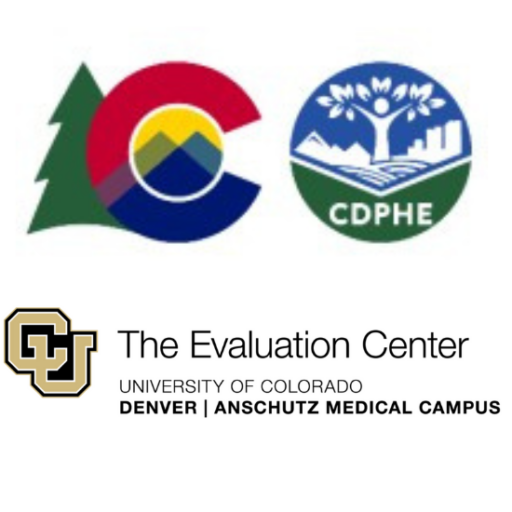Learning from the Community
In this step you will:
Identify community champions.
Design the needs assessment tool.
Conduct the needs assessment with community champion support.
Bring needs assessment findings back to the community.
Summarize needs assessment findings and decide on an intervention to implement.
Learning from the Community
Click the arrow ( ![]() ) symbol next to each section to expand and learn more.
) symbol next to each section to expand and learn more.
Identify community champions.
Now that you have a dedicated project team, a foundational sense of the prevention issue in the community based on available data, and a project plan, it’s time to more thoroughly engage and understand the community.
Community champions are crucial, on-the-ground partners from the beginning of any prevention effort. Community champions are well-connected and respected individuals within the community who can help organize local participation in data collection efforts and raise awareness about the intervention you choose. Examples of community champions include coalition leaders, tribal leaders, public health workers, faith leaders, concerned residents, and public or elected officials.
Community champions have deep social networks in their respective communities, so identifying key leaders within a particular community may be helpful. When identifying community champions, consider a diverse group of leaders and include voices from marginalized and underserved populations to ensure inclusive project efforts.
Consider the following reflection questions to ensure your outreach is inclusive of the entire community:
- Who is consistently underrepresented in the data or engagement efforts for this type of prevention?
- Who faces barriers to participation or access to our resources?
- What assumptions are we making about who is interested or able to participate in this work?
- How can we make the process more welcoming and responsive to marginalized groups?
There may be existing prevention-related organizations in the community who can make suggestions and have the capacity to serve as a partner on prevention work. Engage with them and ask for recommendations about who else should be a part of this effort. This can also help build upon existing community work without duplicating efforts.
Next, contact community champions and invite them to a one-on-one conversation (in person or over the phone) to share about the project and learn about their work and experience in the community.
Be sure to cover the following topics during the conversation:
- Ask them about themselves and their involvement in the community to build rapport.
- Provide background on the team and project.
- Share why this project is important and how the community will benefit from it.
- Gauge their interest and capacity to support the project.
- Have a direct ask for how they can support the needs assessment effort if they are available and interested.
- Leave time for questions and respond to any concerns or feedback in a timely manner.

In the Cannabis Project, we referred to SAMHSA’s community sectors to help us identify a diverse group of community champions for a robust conversation about cannabis use, local resources, and local prevention efforts. This group included leaders from youth-serving organizations, schools, law enforcement, religious organizations, public health practitioners, parents, youth, and prevention leaders from the Southern Ute tribe.

For more ideas about how to identify community champions and what community sectors you may want to consider, SAMHSA’s Community Partners resource offers helpful ideas on community engagement.

Try using this template to log your outreach efforts to potential community champions. Track categories such as the date you last contacted them, their roles and affiliations, and their level of interest in the project to stay organized in remembering multiple interactions and fulfilling commitments made to community members. Assistance and input from community champions is vital to the project’s success. Being consistent and communicative demonstrates respect and care.
Design the needs assessment tool.
Community champions will be important partners for shaping and carrying out the needs assessment.
A needs assessment is a systematic process used to identify and understand the following content areas:
- Beliefs
- Behaviors
- Available resources
- Existing barriers
- Strengths of a community
It can involve surveys, interviews, focus groups, presentations, and other methods of data collection. In prevention work, the purpose of a needs assessment is to gather data that can help a community choose the right intervention to address a particular prevention issue.

There are several existing resources that may be modified and adapted to meet your community’s unique needs. For example, Colorado State University’s Community Readiness for Community Change Assessment is a widely used and respected resource that explains how to conduct a community readiness assessment and how to develop an action plan from the findings.

If you decide to conduct focus groups as part of your needs assessment, this is a helpful resource that details how to develop a focus group protocol, identify staff, schedule the focus group, recruit participants, and analyze the data.

In the Cannabis Project, we developed our own needs assessment by combining elements of an existing community health needs assessment, a community readiness and capacity assessment, and a training needs assessment. We developed interview and focus group guides to reflect the questions of interest from these assessments. As data collection progressed, we modified the guides to capture emerging questions and areas of interest. For example, when early interviews showed that most professionals working with youth were not receiving any training on cannabis prevention, we shifted to collecting information on community readiness and opportunities for including cannabis prevention training in their work.
Here are examples of our protocols that may help spark ideas for questions of your own or provide a template to modify for your community and questions:
Conduct the needs assessment with community champion support.
Once community champions are identified and engaged and the needs assessment tool is drafted, the next step is to carry out the needs assessment. The goal of a needs assessment is to gain as full of a picture of the community as possible. Seeking help from community champions to carry out the needs assessment can help achieve this goal. Ask for help to identify potential participants and brainstorm the best ways to invite community members’ participation.
When recruiting potential participants be sure to provide enough information about the project, its goals, and how it may benefit the community. Depending on the types of tools being used, this information may be on a flyer, at the beginning of a survey, or in an email inviting potential participants to join a focus group or schedule an interview. When funding allows, offering incentives demonstrates respect for community members’ expertise and appreciation for their time. Amount, type, and method of distribution may depend on your organization and funding source and should be carefully considered.
Recruitment and scheduling often take longer than expected. You may need to revisit your project timeline and make adjustments. Spending extra energy and effort on recruitment results in quality community perspectives and insights that lay the foundation for the intervention. Give the project team and potential participants sufficient time to spread the word about the community assessment, hear about the effort, schedule time to participate, and share about their community through surveys, interviews, or focus groups. Regardless of how participants are recruited, ask potential participants to invite other community members they know who may be interested in the effort. Word of mouth is a powerful recruiting strategy.

“I ask my kids if they have been offered marijuana at any time and they said yes. So it is very accessible to youth. This has been the biggest change since the legalization of marijuana … that it is now so easily accessible.”
“My sister told me that every time her knee is killing her or something, she takes an edible and it calms down the pain. She tells me it’s a good use for that.”
“I think since the legalization, I believe, it seems like it’s even more prevalent than it was. Now I’m at the middle school level, and I can tell you middle school kids are smoking pot and doing edibles and the whole gamut probably.”

In the Cannabis Project, our team conducted focus groups and interviews with a range of community members from a variety of sectors. We met with Spanish-speaking parents, school professionals, public health professionals, youth-serving professionals, law enforcement agencies, public officials, Southern Ute tribal members, faith-based community members, and youth.We prioritized in-person interviews and focus groups held in each respective community as much as possible to deepen relationships and demonstrate our commitment. As much as possible, we recorded interviews and focus groups, with participants’ permission, for transcription and coding afterwards so the person hosting the conversation could focus on asking questions and listening.
We developed an initial community contact list from state agency active grantee contacts and local public health practitioners to request phone interviews and gauge interest in the needs assessment. We also asked these contacts if they knew any other individuals within the community who would be interested in participating.
Bring needs assessment findings back to the community.
Once the data has been collected, it’s time for analysis. The goal of analysis is to find patterns in what was shared that illuminate community strengths that can be built upon, gaps or challenges where an intervention could help, and how community knowledge and readiness to change can support or be served by that intervention.
Once the analysis is mostly complete, schedule and prepare to share the needs assessment findings back to the community. You will want to carefully consider which findings to share, how to visually present them, and what your goals are for the meeting. In addition to sharing back findings, this meeting is an opportunity to engage community members in interpreting the findings and identifying an intervention to address what the data show.
Depending on the meeting format, there are a variety of options for sharing findings.
Here are some ideas:
- Host a gallery walk with data points or visualizations set up around the room and paper and pens to collect observations and questions.
- Create data placemats that use a variety of data visualizations to sit and talk through findings as a group.
- Build a digital presentation to highlight the findings to a virtual or in-person audience.
- Design a poster.
To ensure the intervention you decide on is relevant and centered in community perspective, be sure to capture questions, feedback, and insights during the data sharing process.

This Sharing Data with Stakeholders resource includes ideas for different methods of data sharing as well as best practices to cater your data share-out to your audience. This resource from the Urban Institute describes Data Walks and how to build one to share your data with your community.

In the Cannabis Project, we chose to use data placemats to share needs assessment findings with the community. We designed large pieces of paper with charts and tables to facilitate discussion about the findings.
Example themes shared:
Community Perceptions of Cannabis:
- Cannabis is accessible and use is prevalent.
- Cannabis use is normalized for young people by adult use.
- Cannabis is natural, medicinal, and safe to use.
- Cannabis is legal so it is okay to use.
Gaps in Knowledge and Skills:
- Community-wide knowledge and messaging about substance use.
- Updated information about cannabis and other drugs (potency, products, etc.).
- Mental health and coping skills.
- Information on health effects, especially for youth.
Over a three-hour meeting, we gave participants the opportunity to connect, talked through the findings, had a guided discussion of the findings, and generated recommendations from the group on next steps.
Our discussion questions for the findings:
- What surprises you about the findings?
- What results are confirming?
- What other information would you like to know?
From the beginning of the project, we knew that the intervention we were interested in providing was cannabis prevention training to professionals working with youth. As a result, we used this community meeting to collect recommendations on developing that training.
Our questions to generate recommendations on next steps:
How do the findings inform the…
- Training development or delivery?
- Questions we ask on the survey to professionals working with youth?
- Engagement of the community moving forward?
Summarize needs assessment findings and decide on an intervention.
In choosing an intervention, begin by referring to existing resources that describe evidence-based practices. There are many interventions out there and there may already be one that is designed to meet your community’s needs.

SAMHSA’s Focus on Prevention resource is a robust guide to choosing an evidence-based strategy and planning and delivering that strategy to your community. It includes recommendations and tips for success for identifying community needs, deciding on the best prevention strategy, and connecting with your audience.
Note that the evidence-based practice used in one community setting might yield different results in your setting. Once you identify a potential evidence-based practice for your community, research to find examples of how it has been implemented in other communities. This can help you determine what aspects may work in your own community and can guide adaptations to fit your unique needs and goals.

In the Cannabis Project, we already had identified online trainings as the best intervention strategy for our goals. RM-PHTC, the training partner, used findings from the needs assessment to develop the trainings. The youth cannabis prevention education wants and needs of the community members determined the topics chosen for trainings.
